Ultimate Maldives Travel Guide 2025: What to Pack, Local Tips, and Must-Know Info for Your Dream Vacation
White sand beaches, light blue water, happy fishes, and overwater villas—that’s what my dreams are made of.
The Maldives, a stunning island nation in the Indian Ocean, is a top bucket-list destination and it’s definitely well worth it. This Maldives travel guide covers everything you need to plan your perfect getaway.
Pinterest is flooded with photos of Maldives overwater villas and inspired ~wanderlust~ for decades. Having experienced the Maldives three times and stayed at 8+ hotels, it’s quickly become my favorite place to visit. While Abhi and I love exploring new destinations, the Maldives is an exception—a true paradise I return to multiple times a year. Planning a trip to the Maldives can feel like a distant dream, but it’s way more achievable than you might initially think. Whether you’re planning a romantic Maldives honeymoon, a fun-filled family vacation, celebrating a special occasion, or crossing off your bucket travel list, this guide gives you the essential information to turn your Maldives dream into a reality.
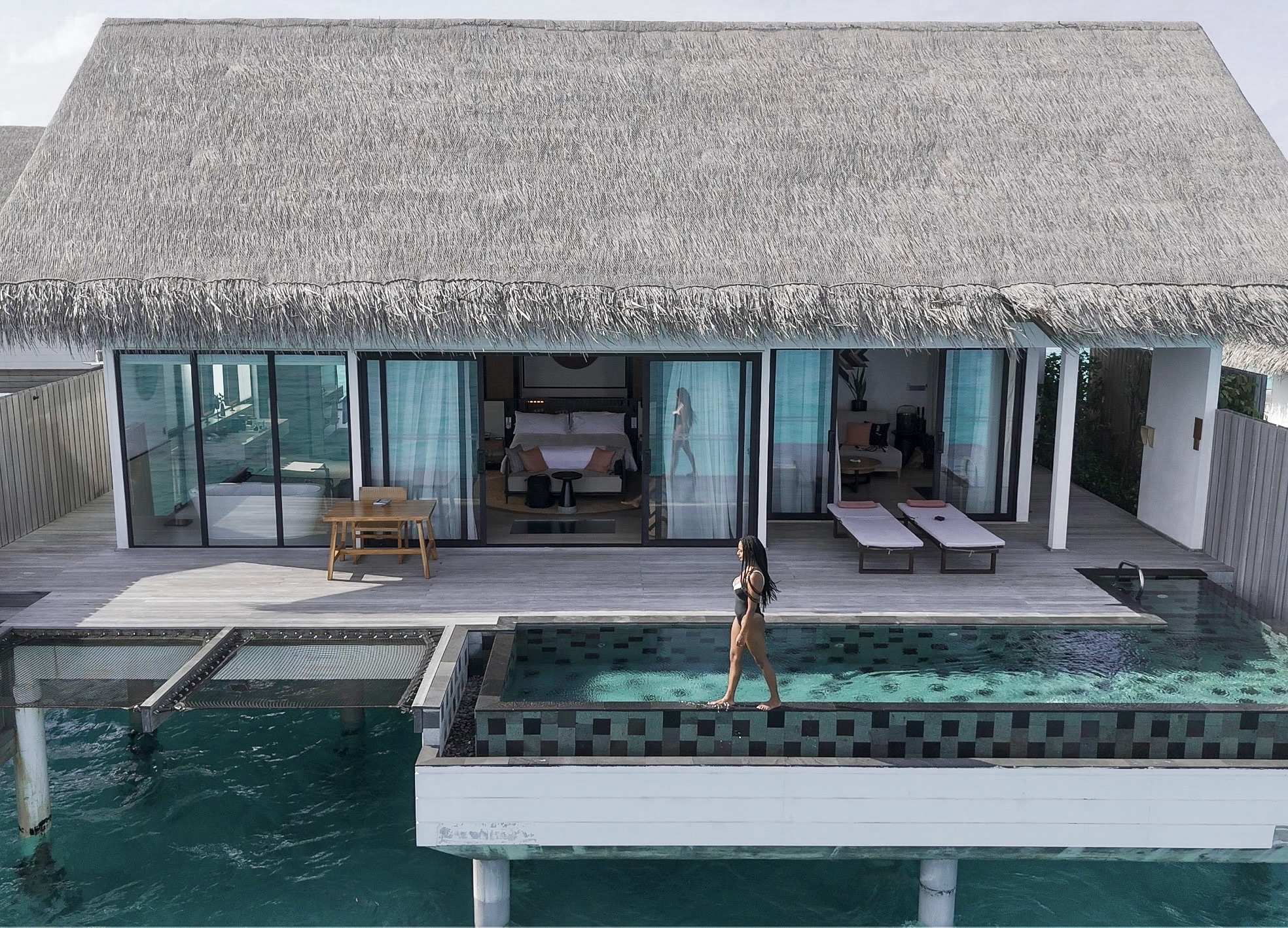
This comprehensive Maldives travel guide will provide you with all the details you need to start planning your Maldives vacation, from choosing the right Maldives resort and understanding Maldives weather to exploring the best Maldives activities and finding affordable Maldives travel deals. Bookmark this post to plan your future Maldives escape.
Key Topics Covered in the Maldives Travel Guide
- Best time to visit the Maldives
- Passport and Visa Requirements
- Choosing a Local or Resort Islands in Maldives
- Transportation in the Maldives
- Restricted Items + Arrival at MLE airport
- Currency in the Maldives
- Culture in the Maldives
- What to wear in the Maldives
- Should I take a snorkle?
- Alcohol and Liquor in the Maldives
- SIM Cards and Data in the Maldives
- Why booking with a travel agent is beneficial
- Best time to visit the Maldives
- Passport and Visa Requirements
- Choosing a Local or Resort Islands in Maldives
- Transportation in the Maldives
- Restricted Items + Arrival at MLE airport
- Currency in the Maldives
- Culture in the Maldives
- What to wear in the Maldives
- Should I take a snorkle?
- Alcohol and Liquor in the Maldives
- SIM Cards and Data in the Maldives
- Why booking with a travel agent is beneficial
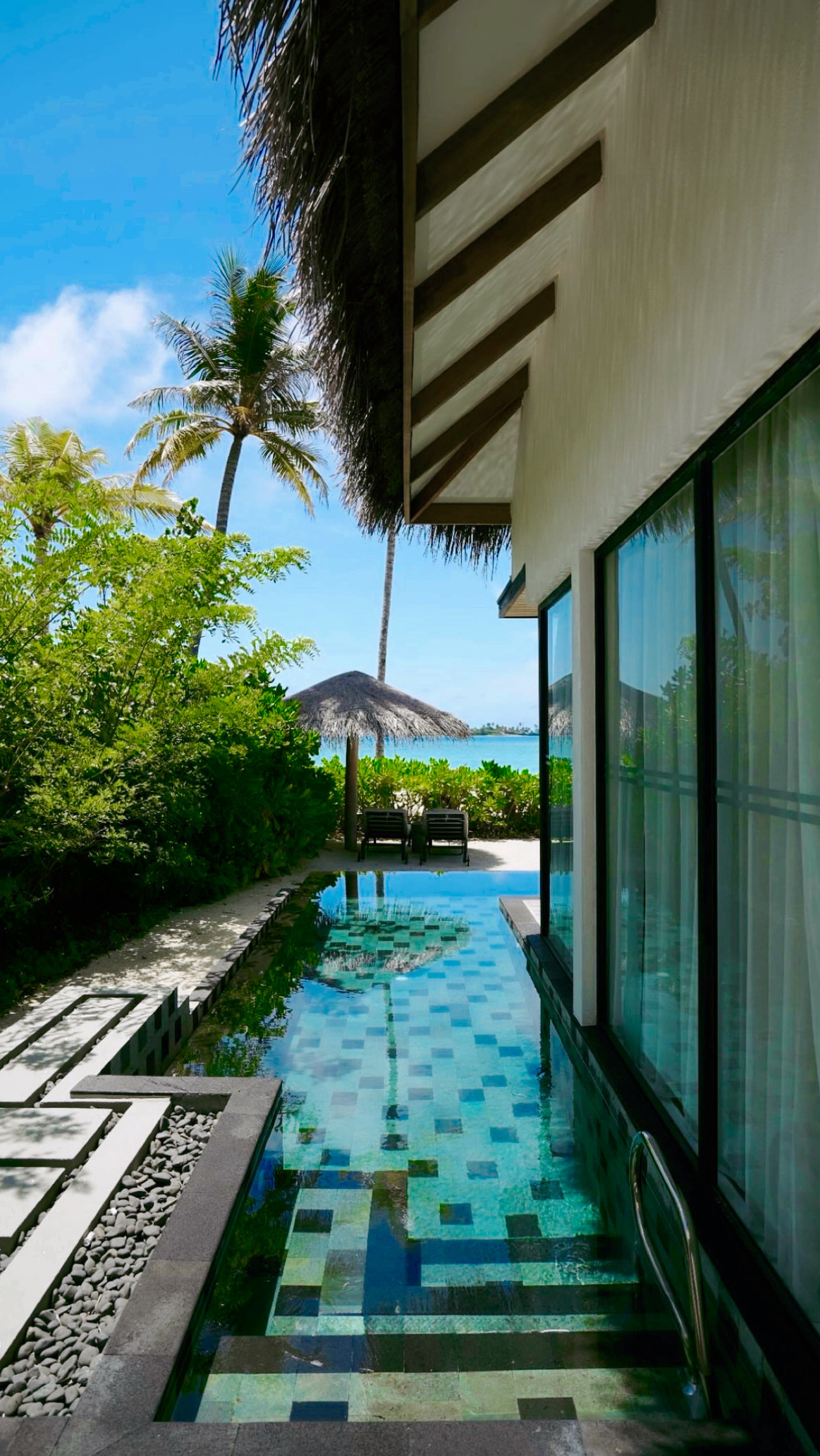
What Is the Best Time to Visit the Maldives?
The dry season runs from November to March. I’d consider September/October and April as shoulder months. Honestly though, the weather is never guaranteed. It’s tropical, so you might have bursts of showers during any month -but then the clouds pass and it’s sunny again. If you check the weather app, I guarantee it won’t be accurate because each island can have different weather since they’re spread out. Rain clouds do pass—it might be perfectly sunny on one island while there’s a downpour on the next. Tropical rain is still beautiful though!
If visiting the Maldives is a once-in-a-lifetime, must-visit bucket-list trip and you only have 4-5 days, I recommend going outside of monsoon season and planning to visit between December and March. Even though it’s rare to have a rainy spell last longer than 2-3 days (short bursts of a few hours are much more likely), I also recommend booking at least 4-5 days.
Passport & Visa
The Government of Maldives provides everyone with a 30-day tourist visa on arrival free of charge.
You are required to have a confirmed booking at a resort, hotel, or safari vessel (liveaboard) upon arrival to clear immigration. Ensure that you have a booking confirmation or you will be turned away! You’ll include the name of your accommodation in the declaration form you submit.
Fill out a declaration form within 96 hours of arrival. DO NOT complete the form earlier than 96 hours before arrival, or you’ll have to refill it.
Click here to fill out the official declaration form.
This is a free link to a free form provided by the Maldivian government. If you’re being asked to pay, you’ve accessed the wrong link. Be cautious if you search for it on your own to avoid phishing sites. The official site will never ask you to pay anything.
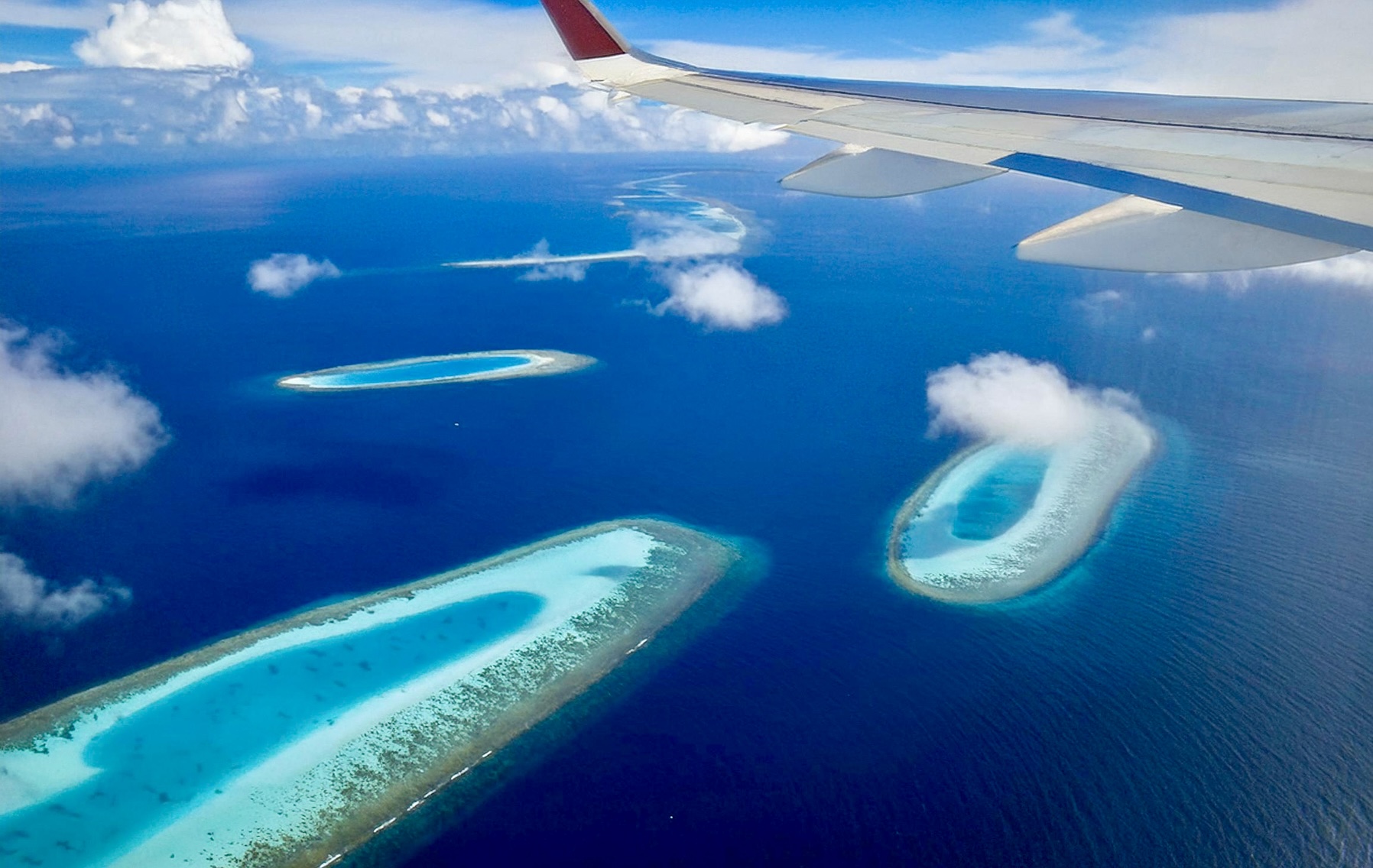
How to Get to the Maldives
The main international airport you’ll fly into is in the capital of the Maldives, Male. The travel time depends on your origin. Located in the Indian Ocean, the Maldives is relatively closer to Europe and Asia. I always make a trip out of it when visiting India. The quickest way from the West Coast is flying Emirates: San Francisco -> Dubai -> Male (MLE Velana Airport). That route takes about 30 hours, so definitely not a trip I’d plan for just the weekend. But it is SO worth it for a week!
Picking a Local Island or Resort Islands in the Maldives
In the Maldives, resort islands are private islands exclusively designed for luxury tourism, offering all-inclusive experiences with overwater villas, fine dining, and private beaches. Resort island tourism began in 1972 with the opening of Kurumba, marking the Maldives as a top-tier luxury destination.
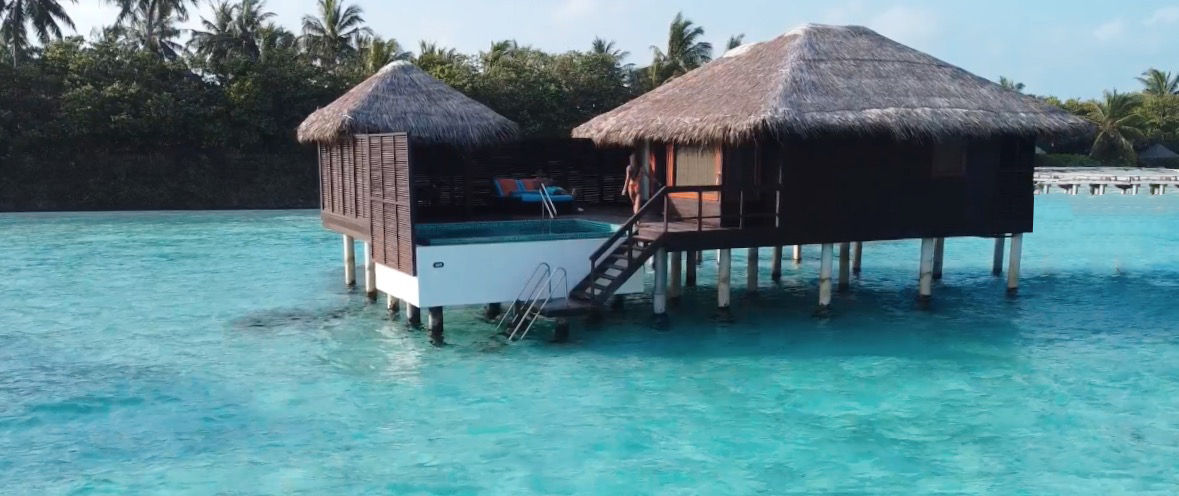
Local islands, on the other hand, are inhabited by Maldivian communities and only started welcoming tourists in 2009 when the government allowed guesthouses to operate. These islands offer a more budget-friendly and culturally immersive experience, giving travelers a chance to connect with the local way of life.
Local Islands: Staying on a local island gives you a chance to really connect with the culture and people of the Maldives, which is one of my favorite parts of traveling. Plus, it’s way cheaper than a resort island. However, there are a few downsides:
- Beach access in a swimsuit: Not all beaches allow visitors unless you follow a modest dress code (aka no bikinis). Locals often designate the best beaches as “bikini beaches,” but it’s not allowed to walk in town without being dressed modestly.
- Alcohol isn’t available on local islands: If you’re dreaming of a cocktail on the beach, this might be a dealbreaker. That said, Maafushi has a floating restaurant that serves alcohol in the evenings and offers free transfers to and from the boat.
- Activities are cheaper on a local island: Snorkleing with turtles or a dolphin cruise can cost $90. Comparitively, the same snorkle tour or dolphin cruise can be $50 on a local island.
- Cheaper transfers: Once you land in Male, you must take the ferry or a speedboat to your island destination. These transfers tend to be a lot cheaper than the resorts. Contact your guesthouse to help you arrange your arrival or check the latest updated ferry schedule.
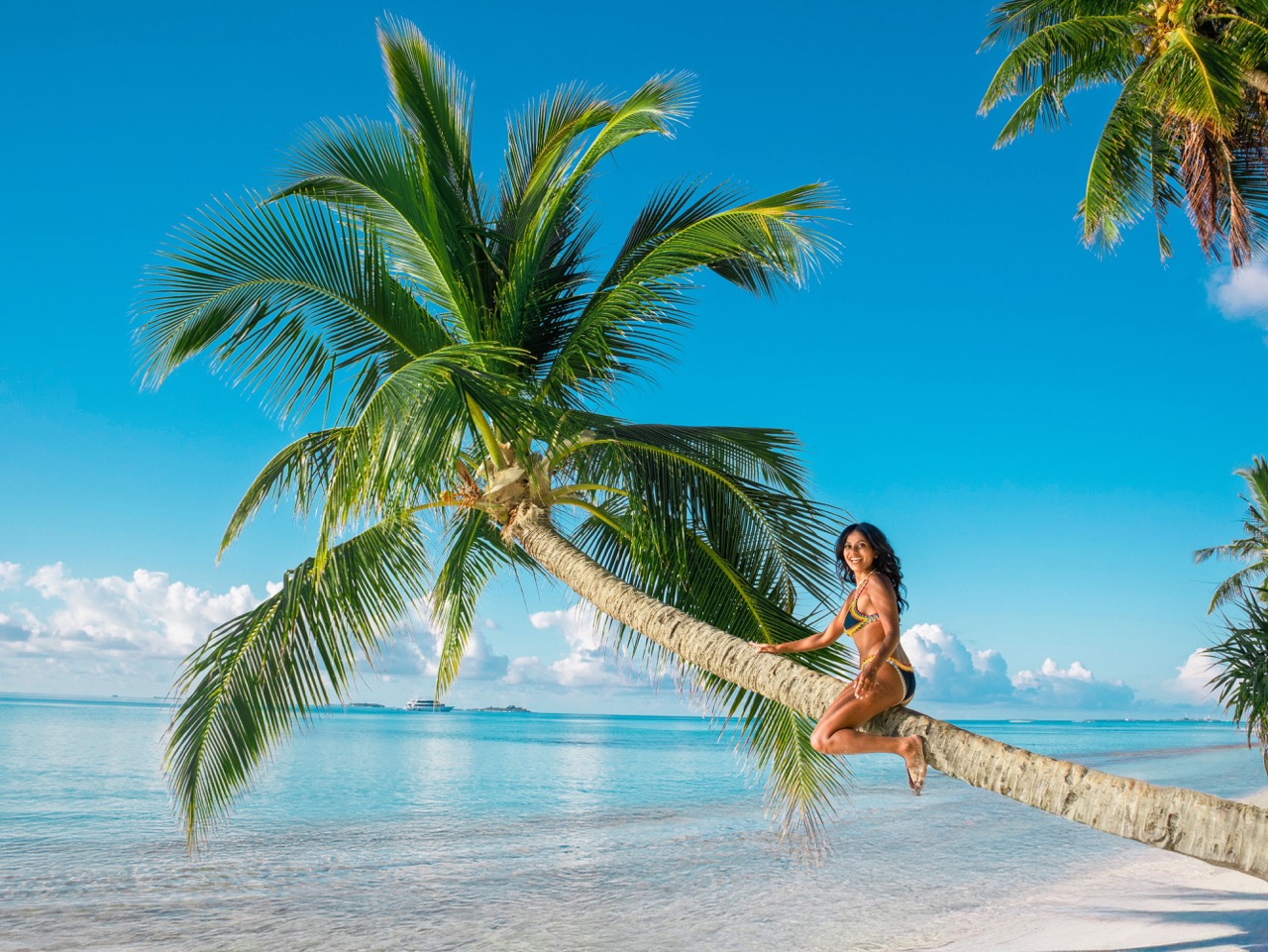
Resort Islands: If you’ve got the typical water villa image in your head and the luxury experience matters to you, then resort islands are the way to go. You’ll have access to alcoholic drinks, private beaches, and all the dreamy villas you’ve probably seen in photos of Maldives getaways. All the same snorkling activities will be available here, but at a higher price since you have to usually travel a little further via speedboat to a nurse shark point, swim with whale sharks or view manta rays.
- Resort islands will also have a transfer fee: While booking your hotel, double check that a transfer is included. This might be a seaplane or a speedboat depending on how far away your resort is from the Male airport. The ferry does not dock at resort islands. Additionally, you can’t hire an external speedboat – the resorts control who can or cannot dock so you can only enter a resort island with a day pass (selective hotels only) or as an overnight guest. If you’ve made a booking with the hotel, either your travel agent or the hotel’s reservation desk will reach out to assit you with transfer and arrival.
- Minimal rules: So, Maldives resorts are all about making your dream vacation a reality. We’re talking private butlers who handle everything from snagging reservations to setting up unforgettable, tailored experiences. Whether it’s an intimate candlelit dinner on a secluded sandbank or a surprise birthday celebration complete with fireworks, they go all out to make sure you leave feeling like a celebrity. Almost no request is denied here!
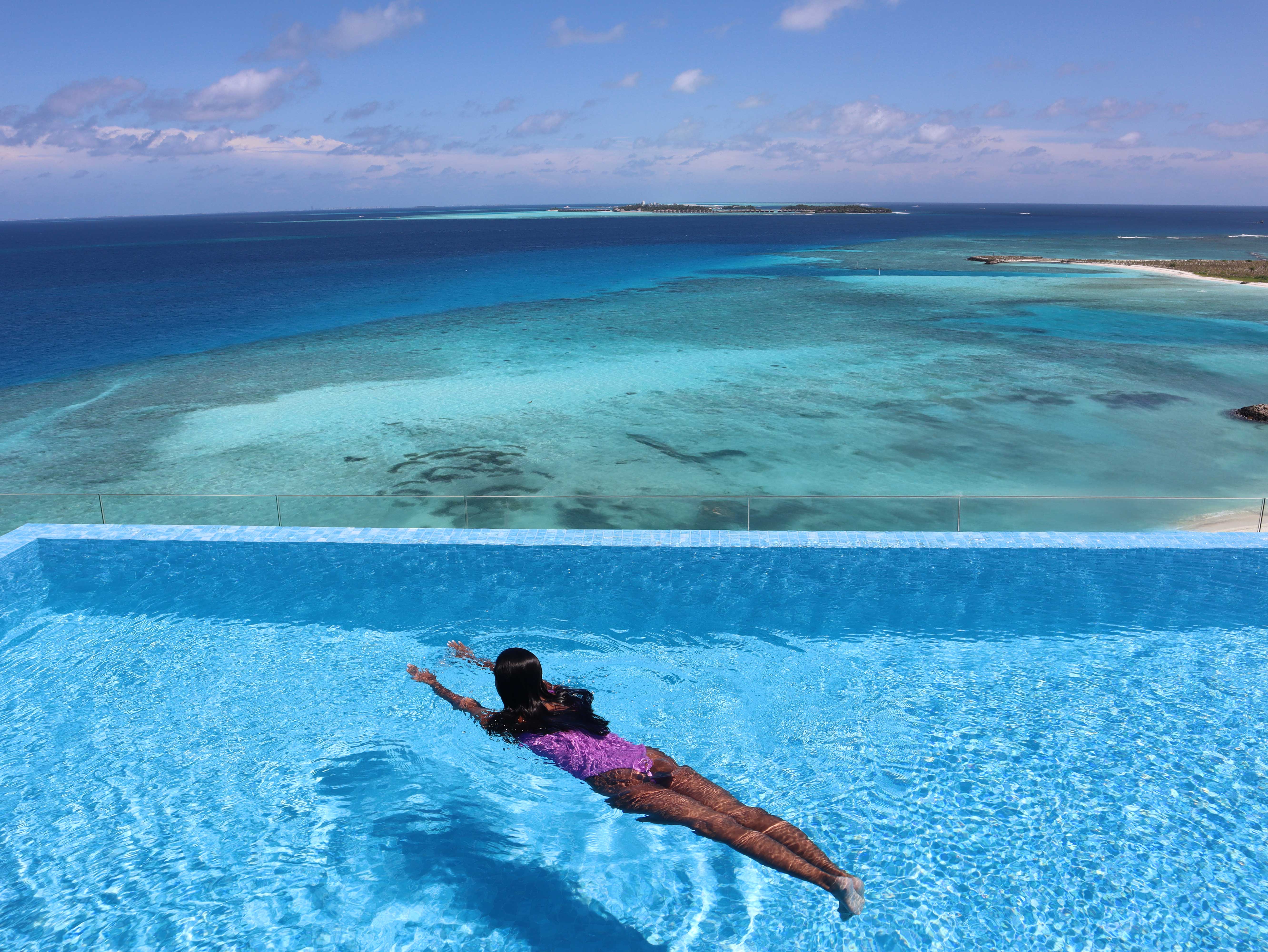
Bottom line: It depends on your vibe and your budget. If you’re craving a cultural experience, interaction with locals or cheaper snorkeling activities, then a local island is amazing. But if you’re here to splurge and sip cocktails by the water, head straight to a resort island. 🌴
Arriving at MLE Airport
Bringing liquor or alcohol into the Maldives is prohibited and will be confiscated on arrival. Security may search your bags, and alcohol is easily detected during scans.
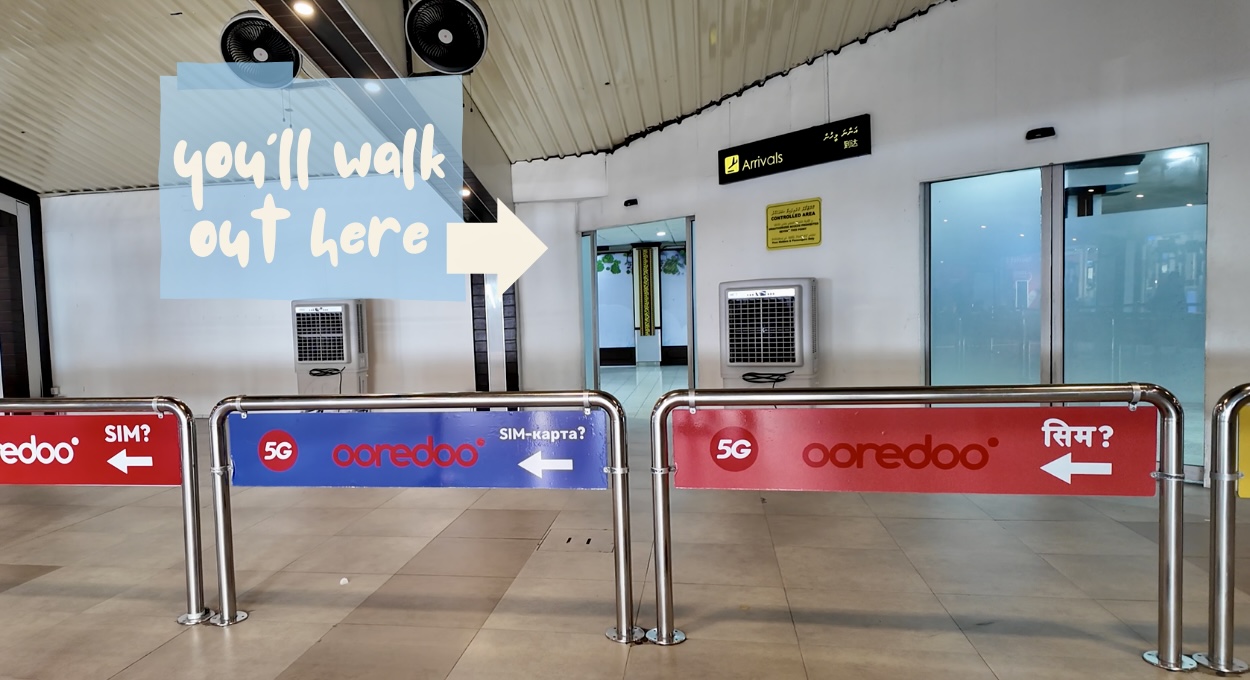
The following items are banned in the Maldives:
-Religious materials offensive to Islam or idols for worship
-Pornographic material
-Narcotics and psychotropic substances
-Live pigs
Restricted for Import (except by government authorities):
-Arms and ammunition
-Alcohol and spirits
-Pork and its by-products
-Dangerous animals (like dogs)
Allowed with Certificates:
-Live plants and animals (with a valid phytosanitary/sanitary certificate)
-Medicines (with a doctor’s prescription)
After exiting immigration, you’ll see ATMs on your left, hotel counters straight ahead, and domestic and seaplane transfers on your right. Follow the instructions provided by your hotel’s reservation desk or those sent by your guesthouse via WhatsApp. However, if you’ve missed instructions from your guesthouse or local island accommodations, your best bet is to head to the help desk on your left, next to Costa Coffee, past the ATMs.
Guesthouses on local islands are often family-run establishments, so they can get really busy, and communication might be sparse before your arrival. Don’t panic—you’re in paradise! Simply head to the help desk, and they’ll guide you to the right spot to make your transfer. If you’re looking for a transfer to Maafushi or Fulidhoo, this is also where you’ll meet your guide!
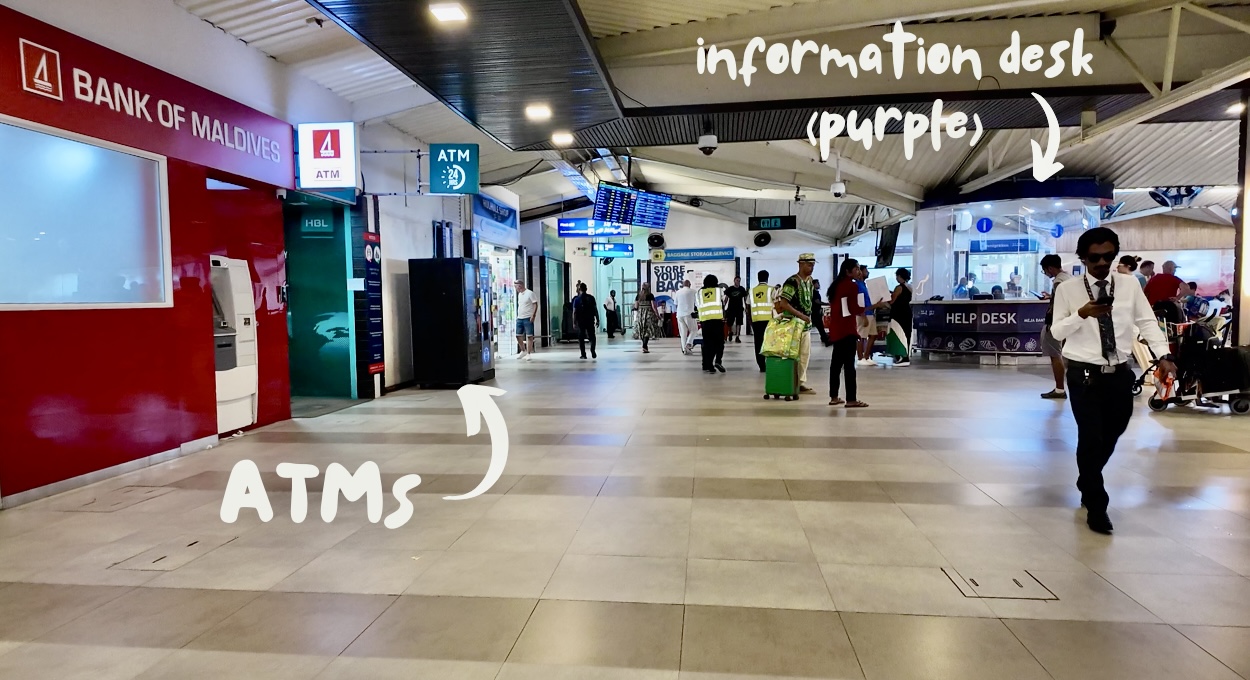
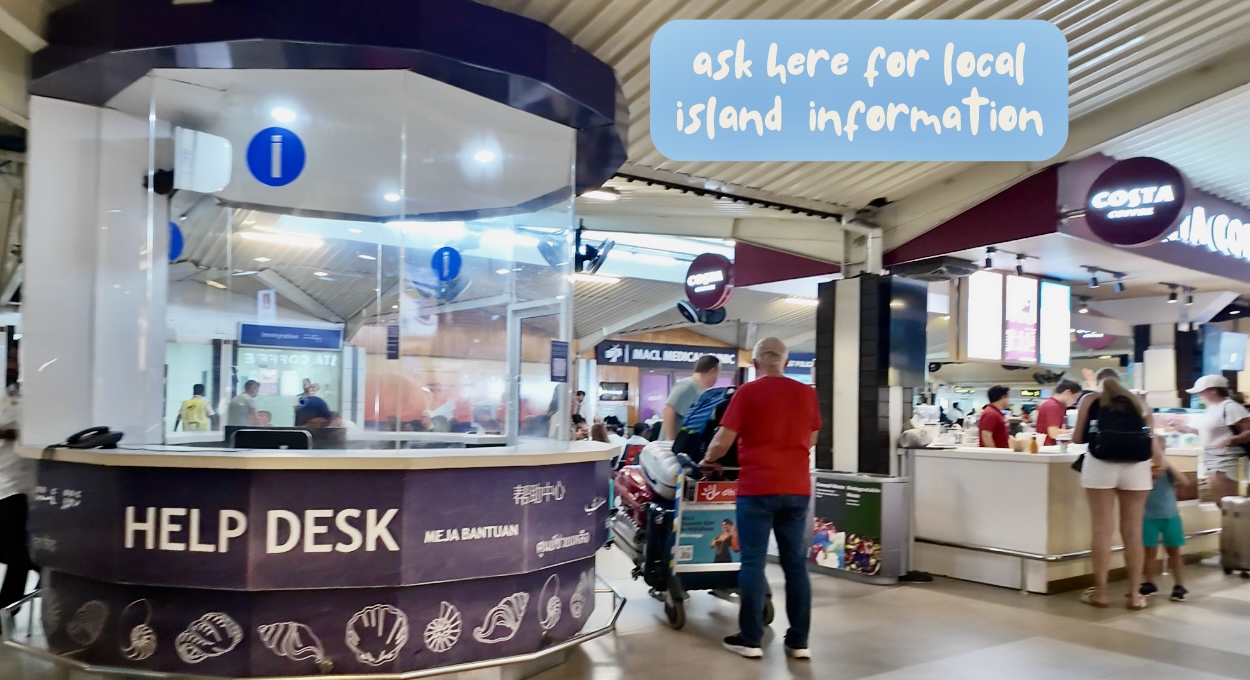
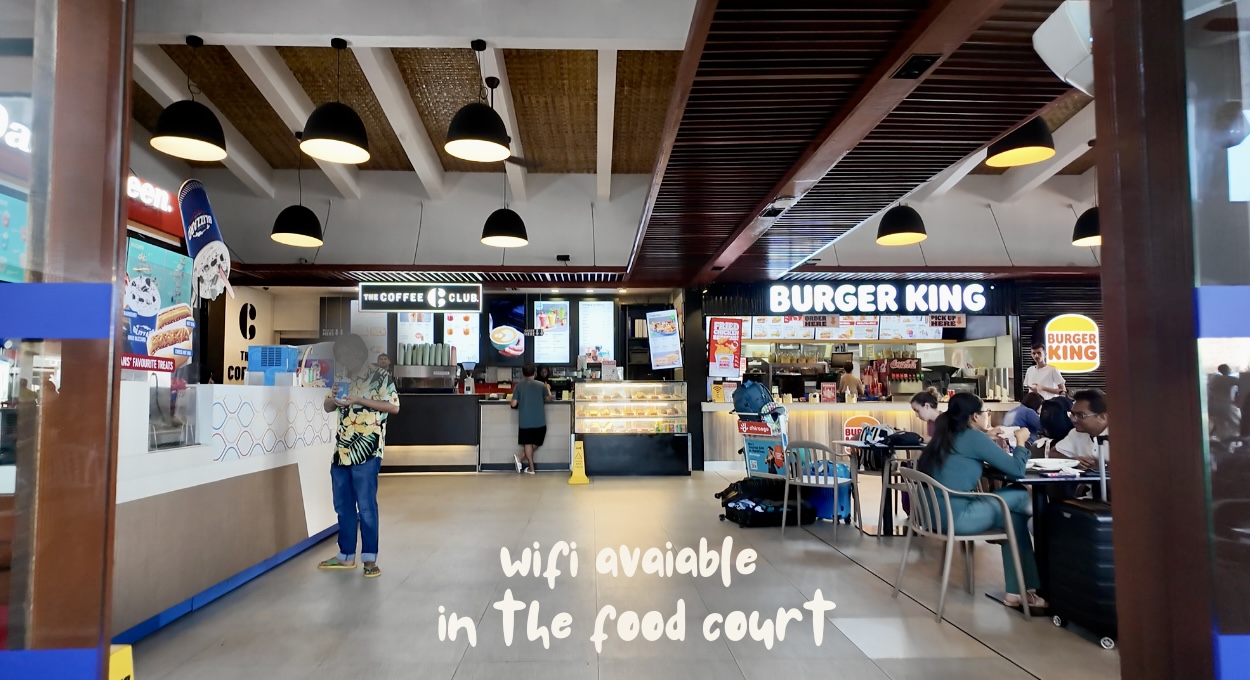
Currency and Money in the Maldives
The official currency in the Maldives is the Maldivian Rufiyaa (MVR). You’ll mainly see it in use on local islands or smaller stores and restaurants. If you’re staying at a resort island, you can always use a credit card. Most resorts operate almost entirely in USD so don’t stress about converting a ton of money into MVR. It’s even encouraged to use USD for tips. Resorts and seaplane transfers will happily swipe your card too. Just make sure to check if there are any international transaction fees or foreign exchange fees with your card or bank—those sneaky charges can add up.
If you’re venturing to a local island or want to shop at small markets, it’s a good idea to have some Rufiyaa on hand for things like souvenirs or local snacks. Local island guesthouses also accept USD in cash for large payments like accommodations. You can exchange money at the airport via an ATM. If you’re staying on a local island, your guesthouse host will direct you to a person nearby that will exchange at a slightly better rate. Exchanging money with a local will help you skip the ATM fee too. If you do decide to exchange with the ATM, keep in mind the withdrawal fees so withdraw a reasonable amount all at once to avoid racking up extra costs.
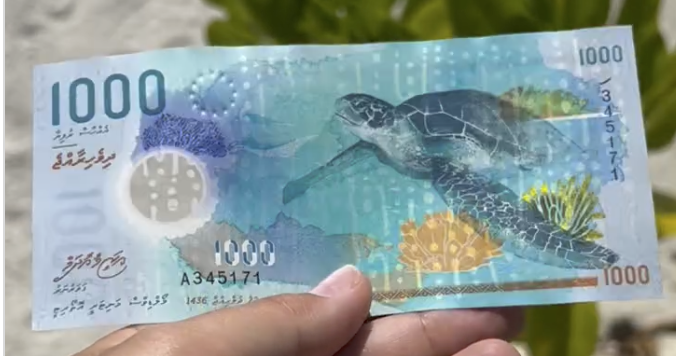
Pro Tip: Always keep some small USD bills with you for tips and small purchases. Even though tipping isn’t mandatory, it’s appreciated, especially for resort staff, spa therapists, or your boat crew. A few bucks here and there can go a long way in making someone’s day!
Transportation in the Maldives
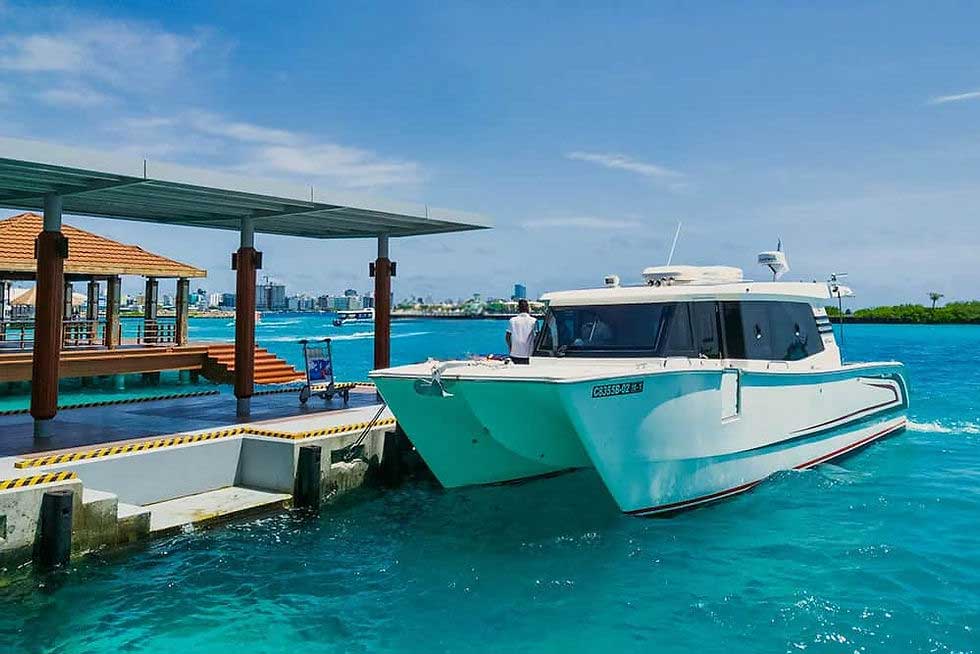
How to Get Around in the Maldives
When you arrive in Male and clear customs, you’ll see a line of people holding signs with hotel names. The Maldives consists of 1,192 coral islands. These are spread across 26 atolls (clusters of islands) and include about 187 inhabited islands. About 100 of these are private resort islands.
Most resorts are on their own private islands, so they’ll contact you after booking to confirm your arrival details and assist with transfers. You can also find transfer details, including costs, on the resort’s website. Resort islands are only accessible if you’ve booked an overnight stay and you’ll need to contact the hotel’s reservation desk to arrange transfers to the resort. Please be aware that resorts control their docks and you can’t just hop on any boat to get there- you will have to pay their speedboat a transfer fee to arrive at the hotel. This is why you can’t just go visit a resort even if you know somebody else staying there etc.
The type of transfer depends on your resort’s distance from Male:
- Close to Male: Speedboat transfers are the cheapest and easiest option.
- Further away: You’ll need a flight transfer. Depending on your arrival time and resort location, you can choose between a seaplane or domestic flight.
- Seaplane Transfers: Operated by TransMaldivian Airways, this option is quicker but more expensive. The seaplane lands on water (such a cool experience!), and you’ll usually take a short boat ride (5–10 minutes) to your resort.
- Domestic Flights: These are cheaper but take longer. After landing at a domestic destination, you’ll need a speedboat transfer to your resort, which can take 30–50 minutes.
Late-night arrivals may limit you to domestic flights, as seaplanes don’t operate after dark. Speak with your reservation assistant when booking to figure out the best transfer option.
On both of my trips, the resorts were far from Male, so I’ve done both seaplanes and domestic flights + speedboats. Both were great! It just depends on what matters more to you—saving time, saving money, etc.
WiFi at Maldives Airport & Getting a SIM Card or eSIM
WiFi Access at the Maldives Airport
Male International Airport (MLE) offers WiFi in the food court. In my past experience, you might need to buy food to access the WiFi and they hand you a code after they sometimes places like Burger King just give it away (try “king” as the password!). It’s good enough for basic browsing, so grab a snack and log on if you need to send those “I’ve arrived!” messages.


SIM Cards at the Airport
Once you land, you’ll see kiosks selling SIM cards from Dhiraagu and Ooredoo—two of the Maldives’ top carriers. The SIM cards are free; you just pay for the plan. Staff at the airport kiosks make setup a breeze. Stop by and ask them which service is better on the island you’re visiting. If you’re going to Male (inside the capitol city) then you can wait to buy at a better rate a a store in the city!
-
- Traveler Lite Plan ($40): 20GB data, USD 6.50 allowance, 150 call minutes, 30 days validity.
- Traveler Premium Plan ($50): 30GB + 70GB social data, USD 9.50 allowance, 300 call minutes, 30 days validity.
- Traveler MiFi Pack ($75): 125GB data, 30 days validity, includes MiFi device.
-
- Tourist $40: 20GB data, 100 call minutes, 150 SMS, 30 days validity.
- Tourist $50: 30GB + 70GB social data, 150 call minutes, 200 SMS, 30 days validity.
- Tourist $100: 125GB data, 150 call minutes, 200 SMS, 30 days validity, includes MiFi device.
eSIM Options
If your phone doesn’t have a SIM card slot, eSIMs are a game-changer. Both Dhiraagu and Ooredoo offer eSIMs, and you can set them up remotely before traveling.
Which Option to Choose?
For resort stays, reliable WiFi means you might not even need a SIM. But if you’re visiting local islands or venturing further, grab a SIM or eSIM for peace of mind—especially for checking ferry schedules or staying connected in remote areas.
Pro Tip: Internet can be spotty on local islands, so if you need consistent connectivity for work or uploads, invest in a good data plan.
Culture in the Maldives
The Weekend in the Maldives
Heads up—the weekend in the Maldives is Friday and Saturday, not the usual Saturday and Sunday. Since the Maldives is a Muslim country, Friday afternoons are dedicated to prayers, and some services—like restaurants and speedboat transfers—pause on Friday 11:45 a.m. to 2 p.m.
This might not matter much if you’re on a resort island, but it’s something to keep in mind if you’re on a local island. From my experience in Gulhi, this wasn’t a big deal. The only minor hiccup was waiting 30 minutes to grab a bottle of water from a beachside shop. The speedboat company also canceled their 12:30 p.m. boat from Gulhi to Maafushi, so I ended up spending five hours in Gulhi instead of three—but honestly, I was totally fine with it.
Language in the Maldives
Did you know the national language of the Maldives is Dhivehi? Yeah, me neither until I got there. However, since tourism is such a large industry in the Maldives, turns out that almost everyone speaks English so I had zero communication issues during my trip.
Don’t Haggle
When visiting the Maldives, bargaining is a big no-no, and honestly, trying to haggle just makes you look cheap. This isn’t a chaotic marketplace—it’s a paradise where tourism is the backbone of the economy. The locals work hard to craft beautiful, handcrafted souvenirs and provide world-class services, so paying the fair price is a way to support their livelihoods and show respect for their work.
Since picking up seashells and transporting them home isn’t allowed (let’s keep the stunning beaches that way), consider buying seashell souvenirs instead. It’s a great way to take home a piece of the Maldives while directly contributing to the local economy.
And here’s another reason to love this place: theft is almost unheard of. The tight-knit island culture means locals rely on and support each other, creating a strong sense of trust and community. I even left the keys in my scooter overnight in Dhigurah because they haven’t had a crime in decades. So, soak up the island vibes, skip the haggling and embrace the magic of this incredible destination. 🌴✨
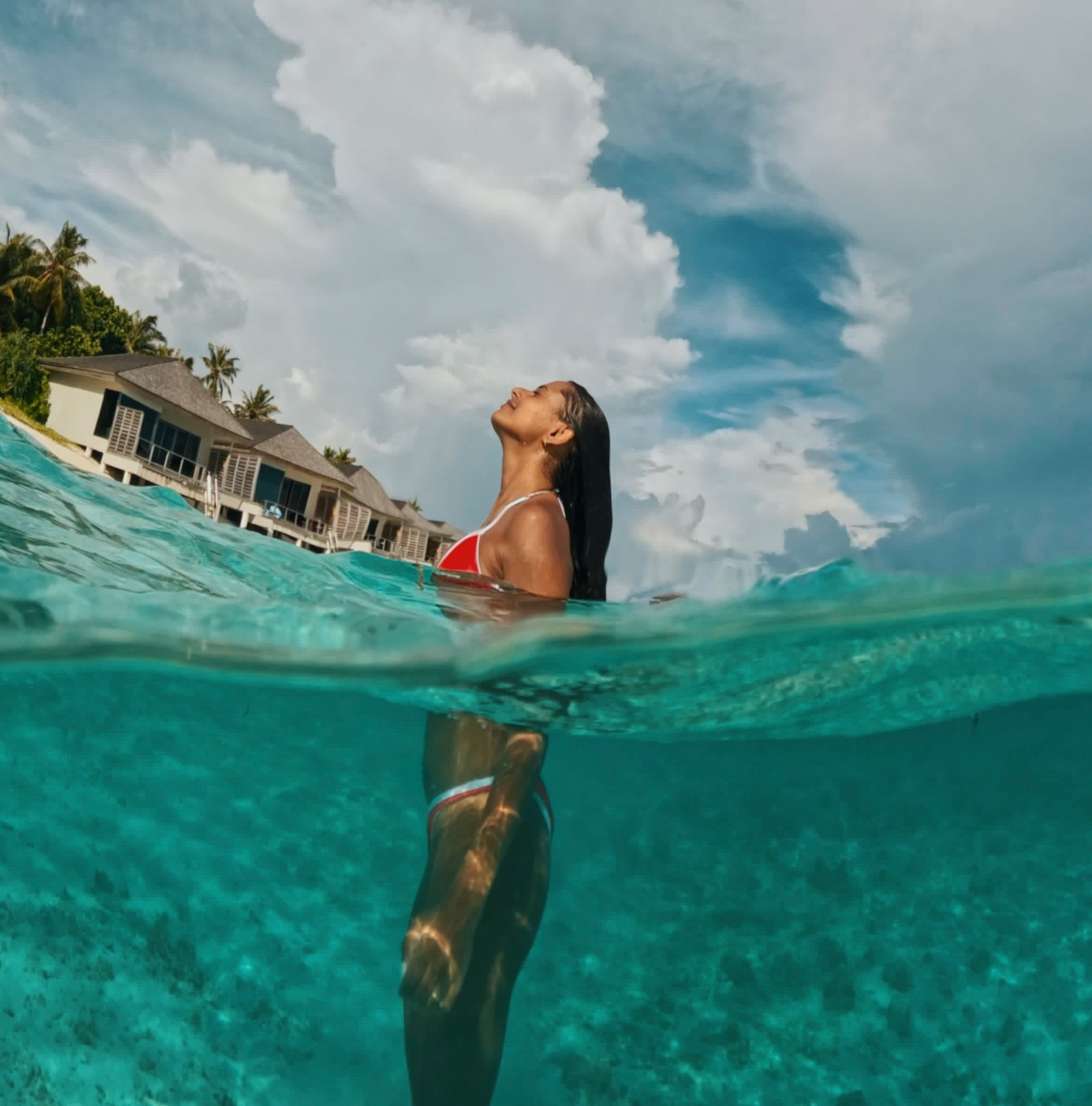
Drinking, Liquor, and Alcohol in the Maldives
Can You Drink Alcohol in the Maldives?
Yes, but it depends on where you are. Since the Maldives is a Muslim country, alcohol is prohibited on local islands. However, resorts, liveaboards, and private islands freely serve alcohol without restrictions.
- At Resorts: Resorts have fully stocked bars, wine cellars, and even beachfront cocktail lounges. Want a sunset margarita? You’re covered.
- Local Islands: Alcohol is strictly off-limits on inhabited islands, even in guesthouses or boutique hotels. The only exception is Maafushi, where they have a boat offshore that serves alcohol in the evenings and offers free transfers to and from the boat.
- Liveaboard Cruises: These are exceptions where alcohol is available onboard, making it easy to enjoy drinks while cruising.
Can You Bring Alcohol Into the Maldives?
Nope! Don’t even think about sneaking a bottle of wine into your luggage—it’s illegal, and customs will confiscate it. If enjoying cocktails is part of your vacation vibe, book accommodations on a resort island or liveaboard to avoid any surprises. Cheers to sipping piña coladas in paradise! 🍹
What Do I Wear in the Maldives?
Clothing and Attire in the Maldives for a Local Island
Visiting a local island in the Maldives is an amazing way to experience authentic culture but dressing appropriately is essential to respecting local customs. The Maldives is a Muslim country but nobody expects you to cover your head or only wear clothing below your knees if you’re a tourist. However, modest-ish clothing is expected when you’re outside resorts. Now since modest is relative, let’s get into the details.
Here’s exactly what to pack and wear on local islands:
For Women: Maxi dresses, long skirts, or lightweight trousers paired with flowy tops work perfectly. A scarf or shawl is useful for covering up, especially if you plan to visit mosques or religious sites. If you’re swimming at the beach, make sure to cover up when you leave the water—walking around in just a swimsuit is a big no-no past the bikini beach. You’re only allowed to wear swimsuits on designated bikini beaches. Tank tops, crop tops, shorter skirts are also fine on local islands and nobody will tell you differently. It comes down to personal preference at this points; for example, I’ve just found it more comfortable to stick to longer linen skirts or pants. But I’ve also paired this with a cropped tee and felt totally welcome on islands like Dhigurah, Fulidhoo and Maafushi.
For Men: Lightweight cotton shirts or t-shirts with knee-length shorts or trousers are ideal. Just avoid going shirtless unless you’re at a designated bikini beach.
Swimwear: Many local islands have “bikini beaches” where swimwear is allowed, but outside these designated areas, swimwear isn’t appropriate. Pack a cover-up or kaftan for walking to and from the beach.
Pro Tip: Stick to lightweight fabrics like cotton, linen, or rayon—they’ll keep you cool and comfortable while adhering to the dress code. Dressing respectfully (and not wandering into local shops in a swimsuit) not only shows your appreciation for Maldivian culture but also makes exploring local markets, cafes, and villages more enjoyable.
What Is a Bikini Beach in the Maldives?
If you’re visiting a local island in the Maldives, you’re probably wondering where you can wear your swimwear. Enter the bikini beach—a designated area where tourists are allowed to wear western-style swimsuits, including bikinis. These beaches are set up to let visitors enjoy the ocean while respecting the Maldives’ cultural norms, which expect modest dress elsewhere.
Typically, bikini beaches are the most stunning stretches of sand on the island (pretty generous of the locals to give this up for tourists!). You’ll find clear signs marking where swimwear is permitted and where it’s not. Always cover up when walking between your hotel and the bikini beach—a lightweight kaftan, sarong, or loose dress is perfect.
Following these guidelines allows you to enjoy the Maldivian sun guilt-free while respecting local culture. At the end of bikini beaches on local islands, you’ll usually see signs reminding you not to walk into town in your swimsuit.
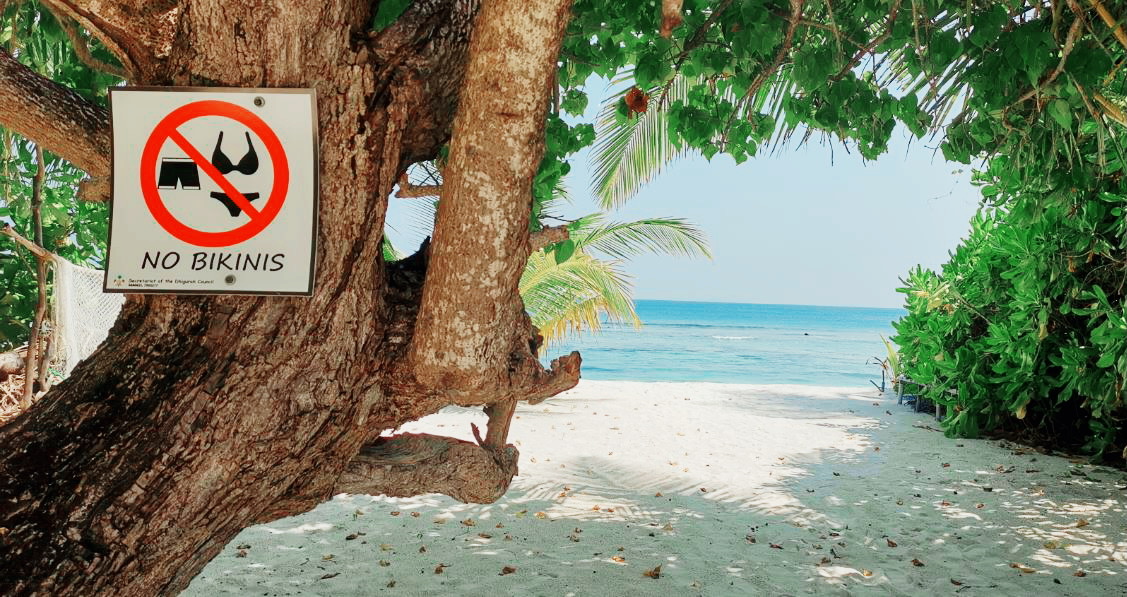

On the local islands, signs and maps are posted everywhere to ensure you feel comfortable and well-informed on where to swim in your bikinis. Often the locals give up their best beaches for their tourists to swim in!
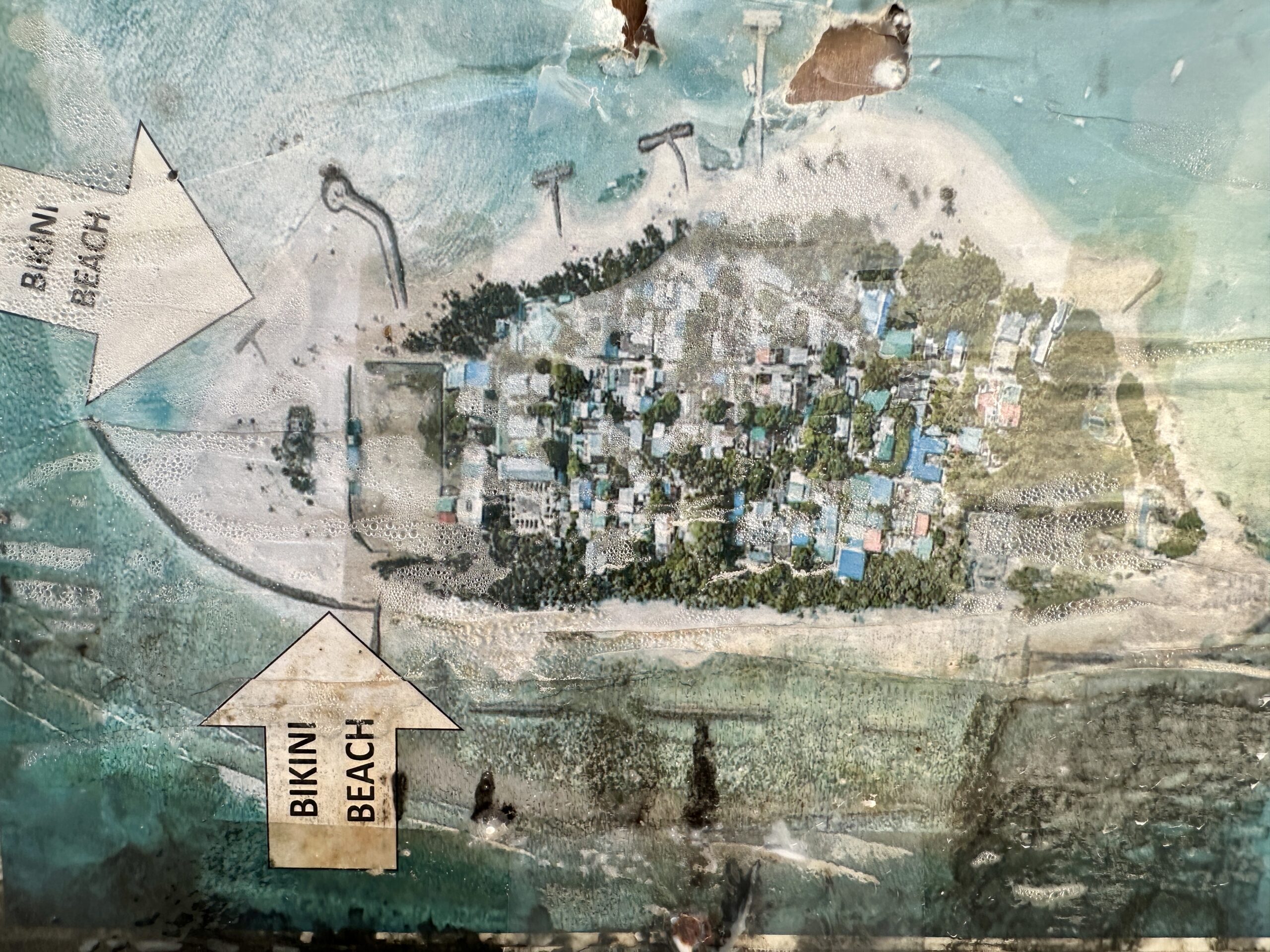
Clothing and Attire in the Maldives for a Resort Island
Packing for the Maldives and only visiting a resort island? You don’t have any rules to abide by in terms of modesty and can walk around in your swimsuit if headed back from the beach to your suite or villa. Bring light, breezy, and resort-chic vibes! Flowy dresses, breathable fabrics like linen and cotton and comfy sandals are the ultimate island win. With tropical weather year-round, here’s what you need to nail your Maldives wardrobe:
Beachwear Basics: Swimsuits (yes, bring a few—you’ll want options for photos!), cover-ups, and kaftans. Opt for quick-drying materials since you’ll be hopping between the ocean and sun loungers. Many cover-ups double as chic lunch attire because, let’s be honest, after snorkeling all day, who doesn’t want a burger under a beach umbrella?
Evening Attire: Most resorts have a relaxed dress code for dinner. Maxi dresses, sundresses, or linen trousers with flowy tops are perfect. Guys can go for light button-up shirts with shorts or chinos—stylish yet sweat-free. You can pack heels if you want to dress up, but most people stick to flats or sandals.
Footwear: Flip-flops, strappy sandals, or even barefoot are ideal. Many luxury resorts encourage the “barefoot luxury” vibe.
Daytime Casual: For excursions or trips to local islands, pack modest clothing like lightweight cotton pants or long skirts paired with sleeved tops. Respecting local culture is a must.
Accessories: Bring a wide-brimmed hat, sunglasses, and a lightweight scarf or shawl for sun protection or covering up on local outings.
Pro Tip: Resorts provide towels, so no need to pack your own. And don’t forget reef-safe sunscreen to protect your skin and the stunning coral reefs!
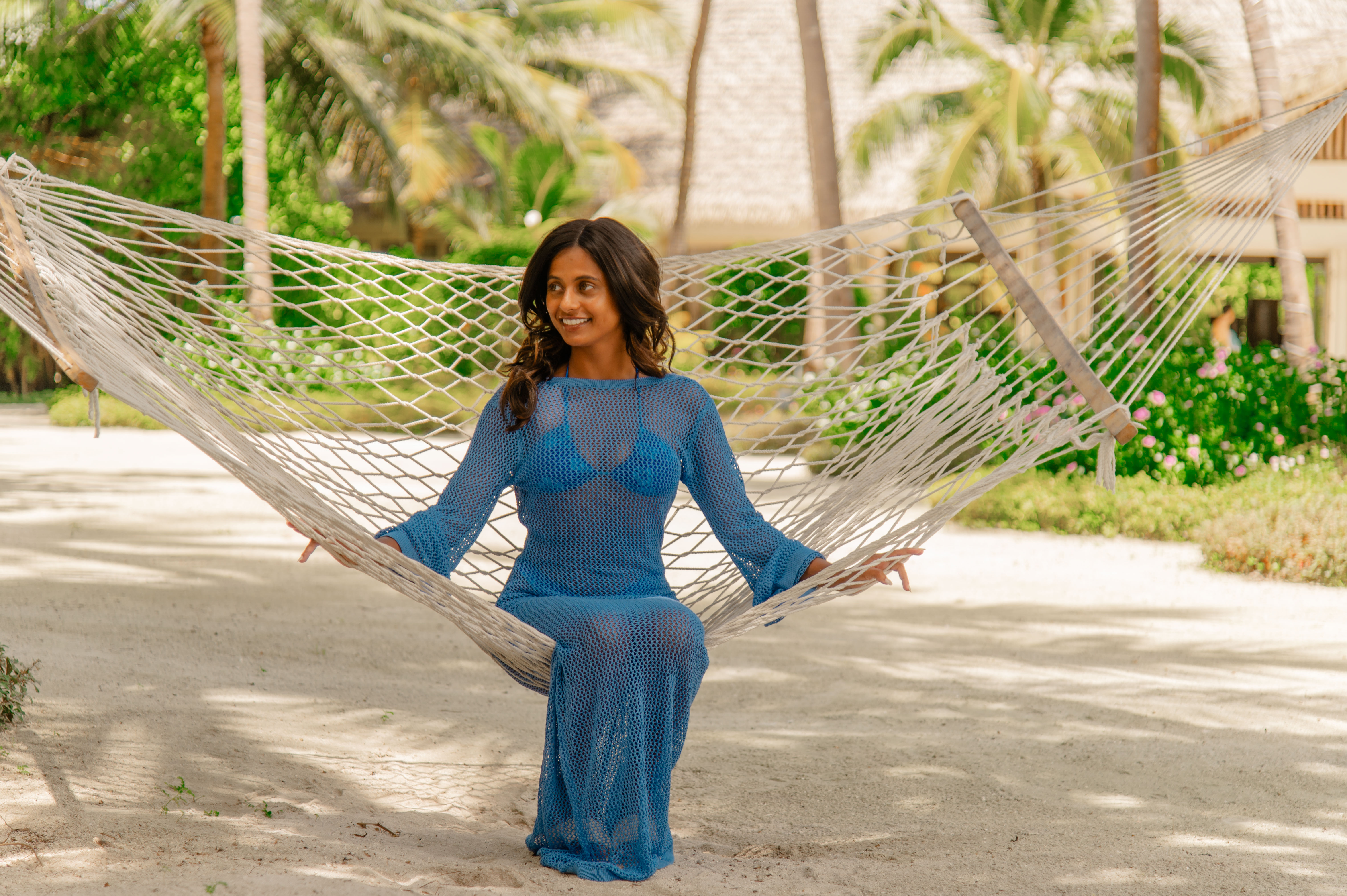
What Do the Maldivian Locals Wear?
In the Maldives, women often wear traditional Muslim attire like abayas that cover them from head to toe. You’ll also see younger girls and kids rocking jeans or long trousers with long-sleeved tops—always paired with a hijab. Some women wear niqabs to cover their faces, and for swimming, they opt for full burkinis or diving suits with a hijab.
Men stick to the basics: trousers and t-shirts are common, with shorts that never go above the knee. Sleeveless tops or low-cut shirts? Not really a thing here. That said, guys will sometimes go shirtless when they’re windsurfing or fishing—because practicality! Sandals, flip-flops, or barefoot vibes dominate here, which totally fits the chill island life.
While you’re not expected to dress like the locals, modest clothing is a must when visiting local islands. Save the swimsuits for bikini beaches, and remember that dressing respectfully isn’t just courteous—it also makes your travel experience feel way more meaningful.
Swim and Snorkle Packing List for the Maldives
If you’re heading to the Maldives, a snorkel and fins are non-negotiable for exploring the stunning coral reefs. While resorts usually offer rentals, owning a lightweight, travel-friendly set ensures the perfect fit and ultimate comfort.
Snorkeling here is straight out of a dream. Glide through crystal-clear waters and spot vibrant marine life like reef sharks, stingrays, and schools of colorful fish. Trust me, it’s a bucket-list experience you won’t forget, so make sure you’re geared up for the adventure of a lifetime!
Water Shoes
Water shoes might not be the most fashionable thing in your suitcase, but they’re total lifesavers in the Maldives. Whether you’re visiting local islands or navigating rocky patches and coral debris, these shoes keep your feet safe from sharp edges or sneaky sea urchins. Bonus? They dry quickly and are super lightweight, making them perfect for travel. Slip them on, and you’re ready to explore with peace of mind.
Life Jacket and Floaties
Guesthouses and Resorts have plenty of life jackets. However, most only stock standard sizes so if you’re traveling with a smaller child, I would suggest taking your own. They usually don’t have floats.
⚠️ Skip Full-Face Snorkel Masks ⚠️
Full-face snorkel masks may look cool, but they come with risks that can ruin your underwater adventure. Here’s why they’re not worth it:
- Carbon Dioxide Buildup: These masks can trap CO2, leading to dizziness or even blackouts underwater. Scary, right?
- Hard to Remove in Emergencies: Their snug fit sounds great until you need to yank them off quickly.
- Leaks & Panic: A bit of water inside can blur your vision and cause unnecessary panic.
- No Talking Allowed: Communicating with your snorkeling buddies? Forget about it.
- Not for Active Swimmers: These masks aren’t designed for vigorous activities like freediving or intense swimming.
Who should definitely avoid Full-Face Masks?
Anyone with asthma, heart issues, or respiratory conditions, as well as those who are overweight or unfit, should steer clear. Stick to traditional snorkel gear—it’s safer, more reliable, and perfect for enjoying the Maldives’ breathtaking reefs.
Booking with a Travel Agent
I almost always book trips on my own since I use points or am visiting on a sponsored stay. However, if you’re paying cash (since many of the best hotels in the Maldives aren’t just with American hotel brands/credit card partners) this is a destination where booking with a Travel Agent for the Maldives Is a smart move. Planning a trip to the Maldives can feel overwhelming with so many luxury resorts, domestic transfers and activities to choose from. That’s where a travel agent comes in! A Maldives specialist helps you navigate the options, score exclusive deals and streamline everything from international arrivals to seaplane or speedboat transfers. Travel agents often have insider knowledge about which resorts offer the best overwater villas, honeymoon packages, or family-friendly perks, saving you hours of research. Plus, they’ll make sure every detail is tailored to your preferences, whether you’re after a romantic escape or an adventure-packed itinerary. Booking through a travel agent ensures your Maldives getaway is seamless, stress-free, and packed with unforgettable moments.
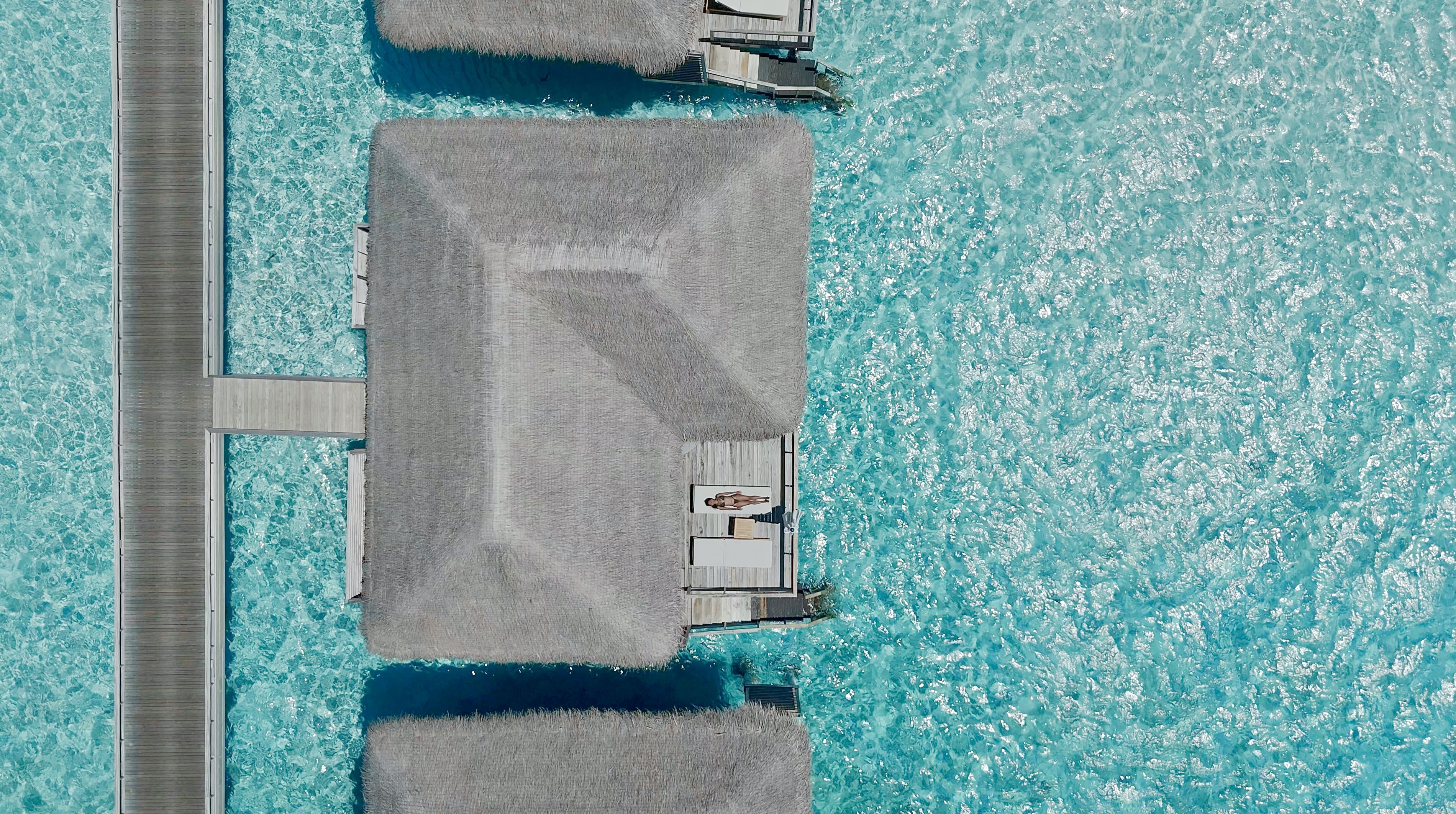
The Maldives is more than just a destination—it’s a bucket-list experience waiting to happen. From dreamy overwater villas and sparkling white-sand beaches to jaw-dropping underwater adventures and unforgettable sunsets, it’s a place that feels like stepping into paradise. Whether you’re planning a luxury getaway or an affordable island-hopping adventure, the Maldives offers something for everyone.
So pack your bags, grab your snorkeling gear, and get ready to explore one of the most breathtaking places on Earth. Trust me, it’s a trip you’ll never forget! Drop a comment below and let me know if the Maldives is on your travel list—I’d love to hear about your plans!
Recent Travels
Luxury Escape at Taj Exotica Maldives: A Stay in Paradise
When it comes to luxury resorts in the Maldives, it doesn’t get better than Taj Exotica Maldives. Nestled in one of the largest lagoons in the archipelago, this five-star paradise delivers the ultimate Maldivian experience. I had been dreaming of staying here...
Velassaru Maldives Review: An ideal escape in the Indian Ocean
This was one of my most convenient, easily planned resort vacations ever. On my arrival there, I met a guest who had visited just this resort seven times and by the end of my visit, I got it lol it was obvious why. Velassaru Maldives checked every box on my list for...
Peak luxury at Hilton Amingiri Maldives Resort
An unforgettable stay at Hilton AmingiriWe were visiting family in India, so how could I resist a short getaway with my husband to the Maldives? I chose Hilton Amingiri Maldives because you honestly can't beat a new property managed by Hilton's dedicated team! The...

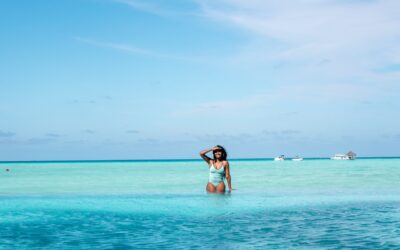


0 Comments